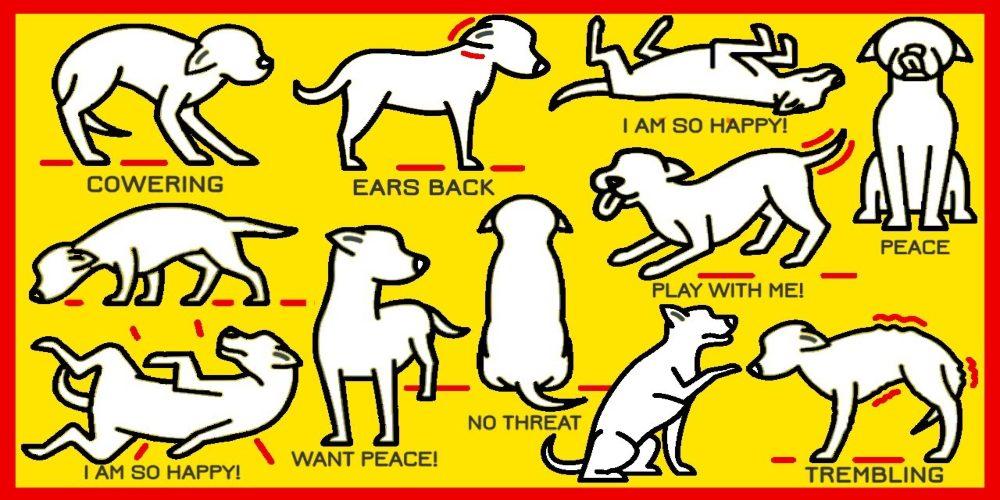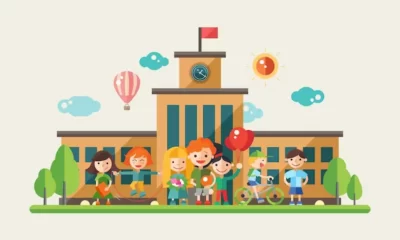Lifestyle
8 Tips For Reading Your Dog’s Body Language

Correctly reading your dog’s body language is an excellent way to strengthen your relationship. It also makes training easier. Here are some tips for reading your dog’s body language to help you understand their feelings.
Table of Contents
Start Early
One of the best ways to familiarize yourself with your dog’s body language is to start watching them early. That’s true whether you are observing golden retriever puppies for sale or a dog settling into its new home.
The more you watch certain dog behaviors, the better prepared you are to know what they mean.
Talk To The Tail
Dog tails are famous for their ability to express emotion. Most humans assume a wagging tail is a happy tail, but that’s not always true. One of the best tips for reading your dog’s body language is to look at its tail.
A wagging, upright tail is indeed happy. But a wagging perpendicular, stiff tail is a sign of nervousness.
A tail curled between the legs shows submission and unhappiness.
A good rule of thumb is the faster the tail vibrates, the more excitable the dog is.
Sudden Freezes
Some dogs are notorious for this bit of canine body language. You can be walking through the neighborhood, and the dog suddenly puts the brakes on. Their paws go out, and their body goes rigid.
These are signs that something anxiety-inducing is nearby. It might be a stranger or an unfamiliar dog, but it might also be the recycling bin. Know your dog and what makes them nervous. It will make their walks much more pleasant when you learn to avoid things they perceive as threats.
Exposed Belly
An exposed belly is doggy body language that is familiar to most dog owners. Showing off their belly shows trust, but it also indicates submission. Typically, it’s associated with begging for tummy rubs. But one of the best tips for reading dog body language is that not all dogs like tummy rubs.
Signs Of Stress
Like people, dogs can experience stress and even separation anxiety. Learning to read your dog’s body language will help you recognize these tells.
Common signs of stress include:
- Destructive behavior (chewing)
- Whining
- Circling
- Excessive barking
A stressed dog may also engage in over-grooming or compulsive licking as a self-soothing mechanism. This constant licking can lead to stress-induced alopecia, which can cause wounds and even infections. Learning how to read your dog’s body language in these situations is essential.
Recognizing Fear-Related Body Language
Another tip for reading your dog’s body language involves distinguishing between stress and fear.
The two can seem similar, but a fearful dog can become aggressive without intervention, so the distinction is vital. A frightened dog may exhibit the following:
- Bared teeth and curled lip
- Tail curled under legs
- Trembling
- Growling
Pay particular attention to your dog’s teeth. Many humans believe this display is the doggy version of a smile. However, it usually means your dog is deeply uncomfortable with a particular situation. It can look cute, but this is body language that begs you to intervene.
Playful Behavior
Dogs, especially young dogs, are playful by nature. Play-wrestling and fighting are prominent in puppy socialization.
The jester’s bow is one of the most apparent signs of a playful dog. Your dog’s bum goes up, and its head comes down. Depending on the breed, they may feint from side to side.
That’s classic play behavior. Other signs of playfulness include:
- Wrestling
- Mouthing
- Lightly gnawing
However, it’s important to stress that a certain amount of mouthing and gnawing is integral to puppy play. It looks foreign to humans but is the canine version of a game like a tag.
Intervene if you notice mounting signs of stress or fear in your dog. Distracting the playful dog with a toy is an effective way to de-escalate a situation.
Not all dogs want to play or have the energy for a lot of play. A dog that doesn’t want to play may go limp or look like the reluctant participant is being pulled around by the neck or feet.
The Sneezing Signal
One of the best examples of canine body language is also the best indicator of how a play session is going.
Often, an enthusiastic dog interrupts their play to sneeze. It’s a bit like a canine safety word. It reminds everyone they’re there to have fun and de-escalates any play-induced tensions. It’s also a sign that you don’t need to intervene, even if the game looks hectic.
Wrapping Up
Understanding your dog’s body language can help you train and bond with your dog. It also gives you insights into their feelings moment-to-moment.
Dogs have a lot to say, and they don’t say all of it with their bark. So watch their tails, their tummies, and the curl of their lips. You’ll learn there’s more going on with your dog than you ever suspected.
Read more – Guide: The Cost of Owning A Dog

-

 Business3 years ago
Business3 years agoHow to Do Long-Distance Moves with Children
-

 Travel2 years ago
Travel2 years agoQuick Guide: Moving To Santa Rosa?
-

 Real Estate3 years ago
Real Estate3 years agoWhy Dubai Festival City is a Great Neighbourhood for Young Learners
-

 Business3 years ago
Business3 years agoIs Guest Posting a Good Inbound Marketing Strategy?
-

 Business1 year ago
Business1 year agoThe Ultimate Guide To Thriving In Your Printing Franchise
-

 Business1 year ago
Business1 year agoExploring The Benefits And Challenges Of Restaurant Franchising
-

 Tech3 years ago
Tech3 years agoCyber Table That Will Change Your Life
-

 Lifestyle1 year ago
Lifestyle1 year agoDallas’ Hidden Gems: 6 Must-Try Restaurants Off The Beaten Path!









Recent Comments